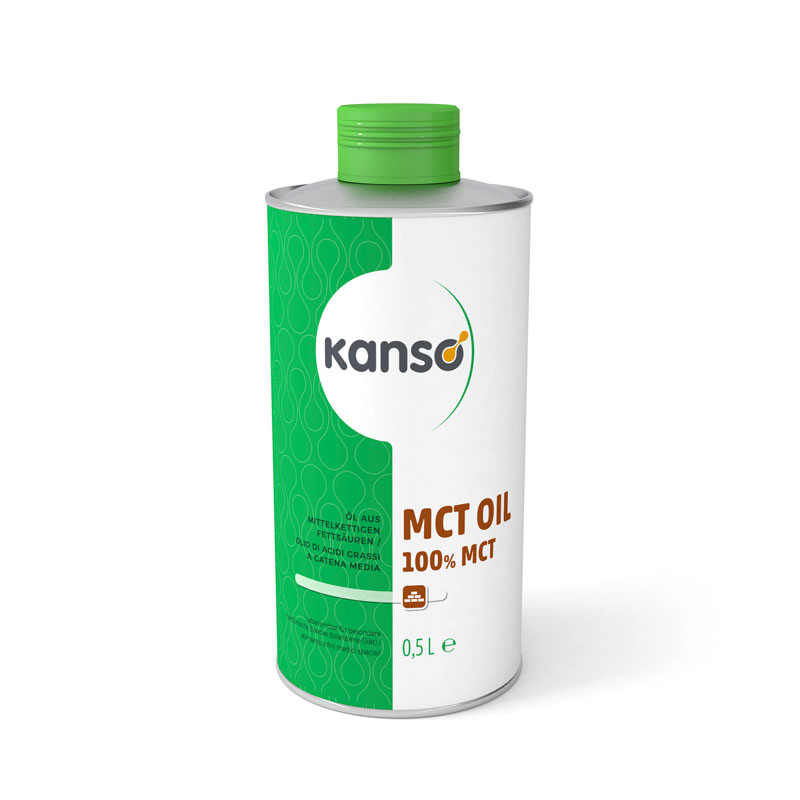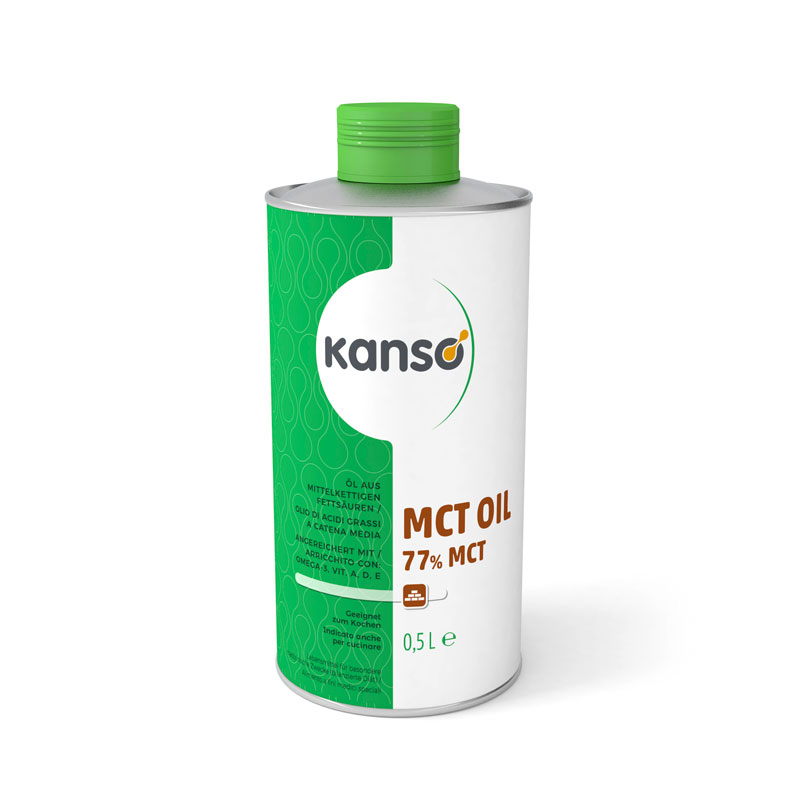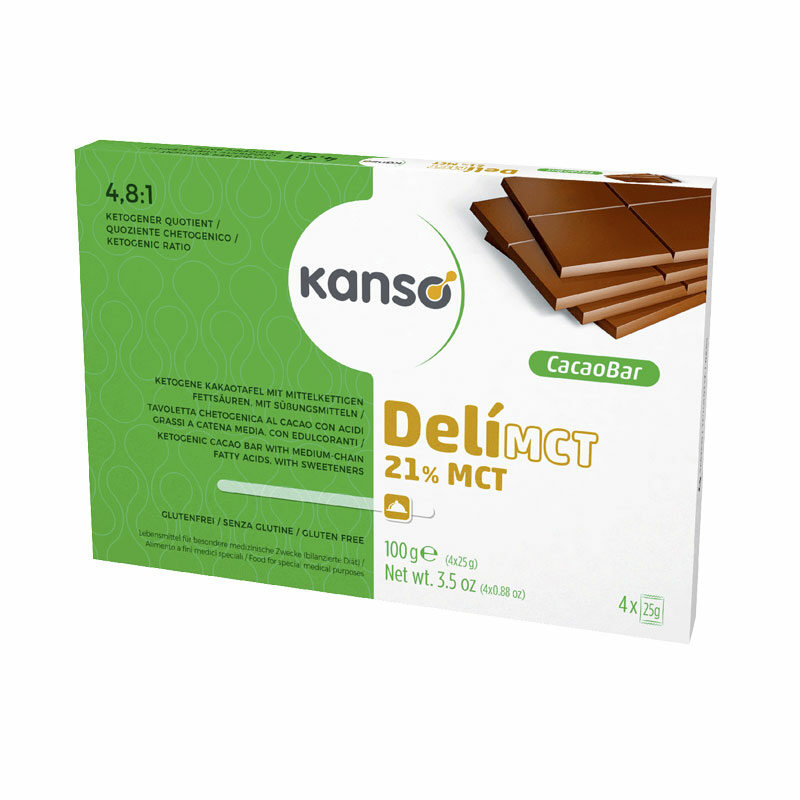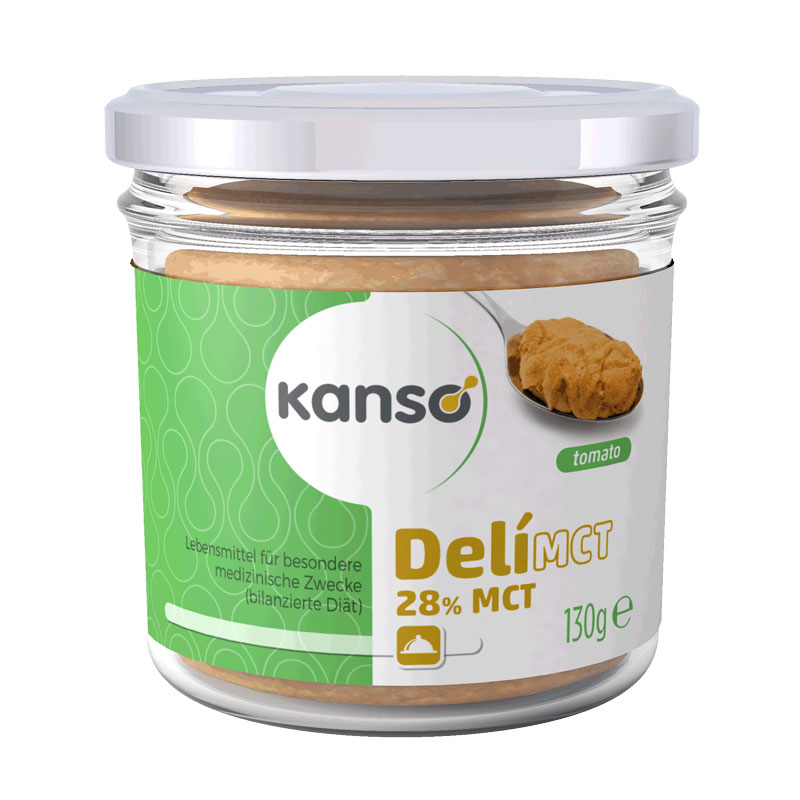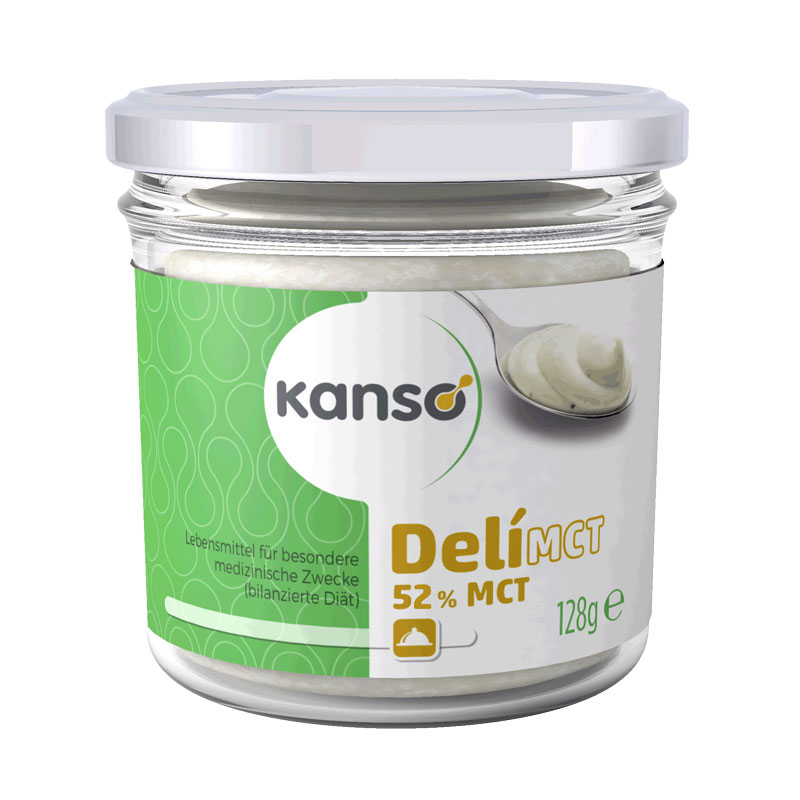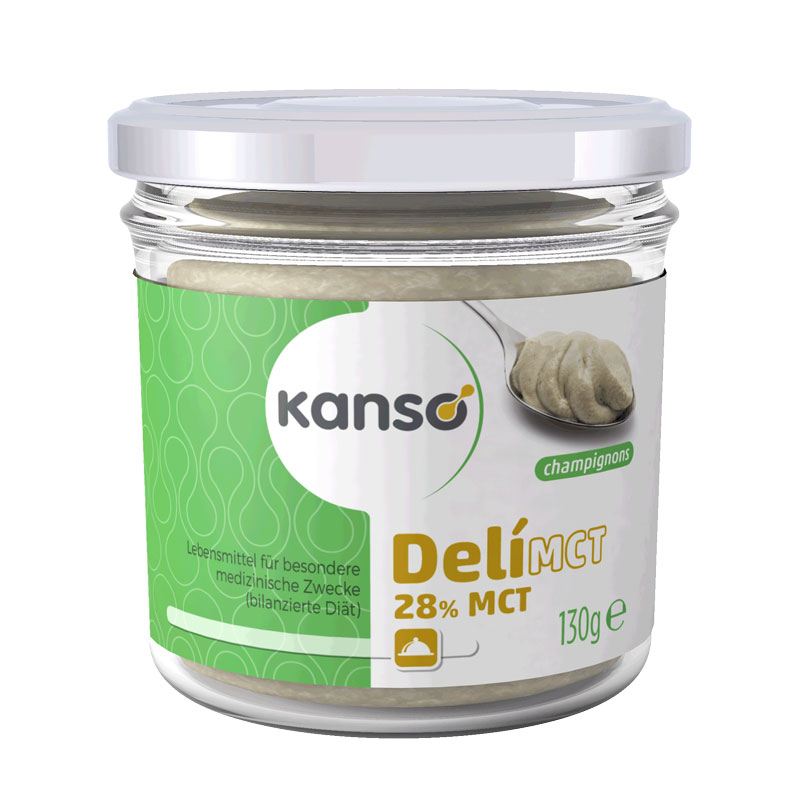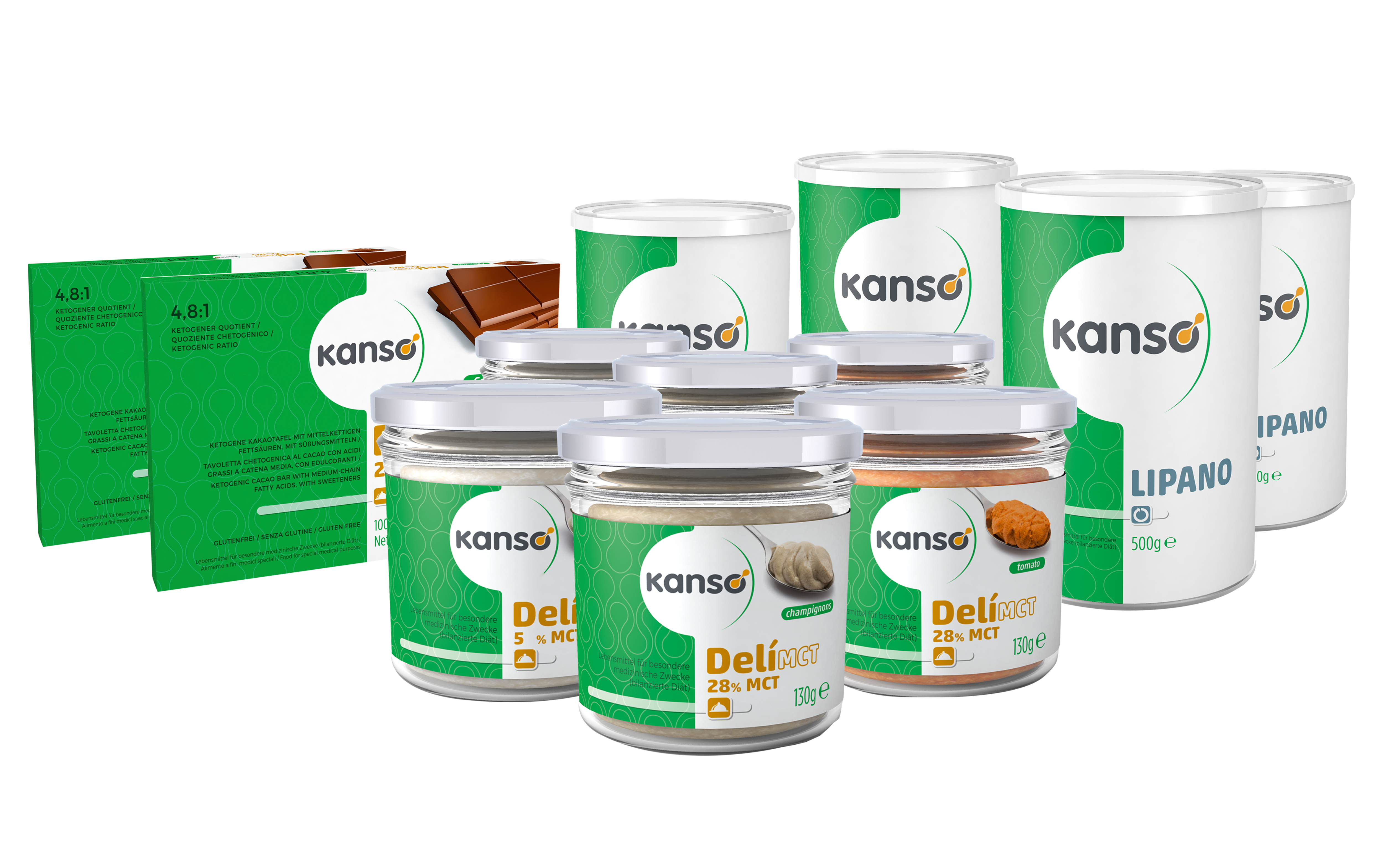
The Kanso MCT product selection is a high-quality source of MCT with advantages in fat profile, taste, practical application and more.
Kanso products are easy to add into the everyday diet.
Kanso MCT can be easily used in baking and cooking without affecting taste and simply added into permitted meals and drinks
Ketogenic Diet With MCT Fats

Various forms and the role of MCT
The ketogenic diet (KD), was developed to simulate the metabolic effects of starvation by forcing the body to use fat as the main energy source. The KD puts the body into a state of ketosis by encouraging the use of ketone bodies for energy. Ketone bodies are the by-product of fat metabolism and can be used as an alternative to glucose as a fuel source for the brain. Ketosis is brought about by the oxidation of fat in the diet is the main energy sources or when the body uses its own fat stores, such as during times of prolonged fasting.
In 1921, US physician Dr. Winter offered people with epilepsy a fatty diet which forces the body to build up ketone bodies, but still provide it with sufficient energy. This early example of the KD is a far cry from the modern, highly varied diet that is now available. Only the calculation of ketogenic ratio (KR) remains a common factor. This describes the relationship between fat to carbohydrates and protein, e.g. 4 parts fat to 1 part carbohydrate and protein combined.
Types of ketogenic diet
- The classic KD maintains a ratio of 4:1 or 3:1 which is set using a calculation program. This means as much as 90% of the energy in the diet comes from fat and each meal and snack must be strictly within the ratio prescribed by your healthcare professional
- In the Modified Atkins Diet (MAD) – a variant of the KD – only the quantity of carbohydrate absorbed per day is calculated. In children this is calculated initially at 10g, for teenagers and adults this increases to 15-20 g per day. Simultaneously, 65% of the daily energy requirement should be absorbed in the form of fat and protein absorption should be reduced, with a target KR of 1.8 – 2.0: 1.
- The Low Glycemic Index Treatment (LGIT) works with a 1:1 ratio, which is not calculated. The LGIT implements foodstuffs with a low glycemic index below 50, which includes a carbohydrate consumption at 40-60 g per day and a high proportion of fibre. The recommended level of fat consumption is equivalent to 60% of the daily energy requirement, while protein consumption should be reduced.
- MCT fats have a higher ketogenic effect than standard LCT fats: i.e. more ketone bodies can be created from the same amount of fat. This has developed into the MCT Ketogenic diet, which includes 60 % MCT fat, 10 % LCT fat, 10 % proteins and 20 % carbohydrates. The ketogenic effect of the KD and the MAD can be supported with a high proportion of MCT fat.
MCT fats have a higher ketogenic effect than standard LCT fats: i.e. more ketone bodies can be created from the same amount of fat. This has developed into the Ketogenic MCT diet, which includes 60 % MCT fat, 10 % LCT fat, 10 % proteins and 20 % carbohydrates. The ketogenic effect of the KD and the MAD can be supported with a high proportion of MCT fat.
Ketogenic diet for epilepsy
Although epilepsy can be treated with medication, there are many patients (as much as 30%) who are not able to control their seizures with medication: known as intractable or drug-resistant epilepsy. Based on observations that fasting reduced seizures in many epilepsy patients, the ketogenic diet was created. It was designed to mimic fasting but still provide the body with adequate nutrition and was implemented in treatment of epilepsy as long as 90 years ago.
The effect mechanism of the KD is still not fully known and understood. Around one third of patients being treated for epilepsy become seizure-free after implementing a KD, approximately another one third exhibits a significant reduction in the number of seizures by at least 50 %.
The success of the treatment in terms of reduced number of seizures can be evaluated after around four to eight weeks. The diet should normally be adhered to for two years, with a phased reduced implementation thereafter.
MCT fats in the ketogenic diet
- MCT fats are faster and less complex to be broken down by the liver (does not need carnitine as a transporter molecule) than LCT fats.
- MCT fats have a lower calorific value than LCT fats (MCT: 8.3 kcal/g; LCT: 9.2 kcal/g).
- MCT fats produce more ketones than conventional fats (more ketone bodies are formed using the same amount of fat).
- Kanso products principally comprise C8 and C10 fatty acids and have anticonvulsive properties, as C10 fatty acids have demonstrated a seizure-reducing effect (Chang et al. 2016, Brain Journal of Neurology).

